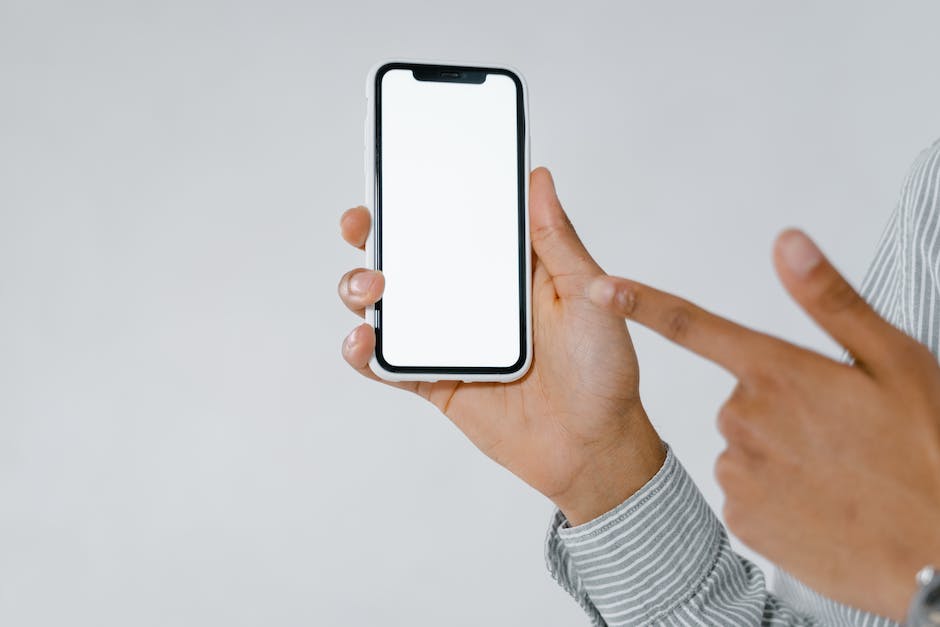Innovative Strategies to Reduce Your Cell Phone Plan Expenses
In a world dominated by mobile communication, having an economical and efficient cell phone plan is crucial. This importance is amplified by the fact that most of our daily routines, professional operations, and personal connections are made convenient through mobile technologies. However, many people end up paying exorbitant fees for cell phone plans due to lack of understanding of their current plan, absence of knowledge on cheaper alternatives, and inability to leverage potential negotiation or technological advancements. The goal is to shed light on these areas, dissecting your current plan, exploring cheaper options, showcasing negotiation strategies, and understanding how technology can lower expenses, ultimately leading to a comprehensive understanding of prepaid versus postpaid plans.
Understanding your Current Cell Phone Plan
In today’s tech-savvy world, having the right cell phone plan isn’t a luxury, it’s a necessity. Whether you’re a bustling CEO, a busy normal Joe, or someone keeping up with the latest TikTok dance trends, the way we use our phones intimately ties into our lifestyle. But often, the critical question goes unanswered: Are you truly getting value for your money?
It is not uncommon for individuals to be tied down to complex and expensive contracts that, even after months and even years paying, still leave them asking, “What does my cell phone plan actually entail?” Here’s a new flash: knowing the ins and outs of your cell phone plan and ensuring it gives you the best value is absolutely critical.
Cell phone plans generally offer a package typically including data usage, text messaging, and calling duration. One could be lured by supposed ‘unlimited’ terms attached to these elements, but a savvier look would reveal the truth. What good is an unlimited data plan if the speed drops to a crawl after a certain limit? Would you truly need unlimited text messages in an era dominated by messaging apps?
When weighing the value of your phone plan, consider your real needs and usage patterns. Are you a data-hungry user, streaming videos, running online businesses, or constantly on social platforms? Then a plan with generous or unlimited data is your best bet. If, however, you use your phone for calls and texts mainly, a plan focusing more on that and less on data would serve you much better.
A trend at the forefront in the market today is flexible phone plans – contracts that allow users to review and adjust their plans. This flexibility empowers the consumer, letting them decide what they do (and do not) need.
It’s not just about what’s in the plan either. The service provider’s network strength and reach are just as integral. Impeccable service in urban hotspots won’t serve you if you can’t get reception at your lakeside cabin.
Ergo, to honestly figure out if your current plan is providing enough bang for your buck, you need to dive deep into how you use your phone and locate a plan that ticks most, if not all, the boxes in your list.
Finally, it’s worth mentioning that cell phone plans aren’t one-size-fits-all. With the astonishing range of options accessible today, there’s no excuse for settling for less than what suits you best. Consider this article as a wake-up call to reexamine your current cell phone plan. In an environment of continuous innovation, there’s always room for finding better value for your money.

Switching to Cheaper Cell Phone Plans
Every savvy professional and entrepreneur knows this maxim: “Value isn’t merely subjective; it’s decisive.” That’s precisely why examining your current cell phone plan for potential savings and improvements is akin to wise financial decision-making.
Yes, switching to a lower-cost cell phone plan can certainly be advantageous. An appealing prospect considering our increasing reliance on smartphones for work, life, and everything in between. The potential amount of money saved will vary significantly with individual usage patterns and the various options available in the market. However, there’s invariably a potential reduction in monthly costs, especially when one aligns his cell phone plan with their precise needs.
Moreover, there’s an added benefit: flexibility. With a lower-cost provider, you’re typically not tied down by a contract that leaves your hands tied. Many of these providers operate on a month-to-month basis, giving you the agility to make changes as your needs evolve. This is a win for those who need the adaptability to match the speed of innovation integral in their industry.
However, the business landscape is rarely ever one-sided. There’s a flip side to this coin. The major trade-off when opting for a lower-cost plan is often in quality. Like any commodity or service, you get what you pay for. Full-featured, high-cost cell phone plans typically have a stronger network, quicker data speeds, and more expansive coverage. If you’re someone who travels frequently or uses data-intensive applications, these considerations cannot be ignored.
Another disadvantage could be the customer support. Oftentimes, bigger carriers invest heavily in this area and assure quick problem resolutions while the smaller, less costly providers may fall short in this aspect.
Just as a well-tailored suit fits perfectly to one’s form, finding the right cell phone plan demands the same precision and investigation. Understand your pursuit of affordability shouldn’t trump your specific needs. Numerous cell phone operators are vying for your business and, as a result, there’s a veritable smorgasbord of plans out there. Look at data limits, network performance, coverage, and remember to read the small print.
A strategic approach towards changing cell phone plans holds the potential to save you hundreds of dollars yearly. But be cautious, and bear in mind that the definition of value extends beyond purely cost. After all, if the connectivity and service aren’t at par with your professional needs, the frustrations and hindrances might far outweigh the financial savings.
Keep investigating, keep innovating, and continue finding the best ways to ensure your investments – including your cell phone plan – provide the maximum value possible.

Negotiating for Better Deals
Cell phone users stand to benefit tremendously from negotiating their cell phone plans. However, this demands a step-by-step practical approach that includes a deep analysis of the plan’s components. Remember, the most inexpensive plan is not necessarily the best plan and each cell phone user must identify what adds value to their specific circumstance.
The power of negotiation cannot be underrated in landing a better phone plan deal. Arm yourself with extensive market insights; understand the pricing and packages of various service providers. Use this information as bargaining power, emphasizing your loyalty as a customer or your willingness to switch if your needs aren’t met. Companies are always on the lookout for ways to retain their customers and might agree to modify your plan.
Another crucial facet is understanding your bargaining power. This can be especially harnessed when your contract is about to end as this gives you a potent leverage to secure a more favorable plan. If a service provider values your business, they might be willing to make concessions. Don’t shy away from asking: The worst they can say is no, and the best-case scenario is a plan that better serves your needs and savings.
Next, substantiate your negotiation with facts, not emotions. Present concrete reasons why you believe you should be given a better deal. Perhaps you noticed a rival company offers more value for less cost, or maybe you’re not fully utilizing the features for which you’re currently paying. Armed with such accurate data, your negotiation is not just persuasive, but compellingly logical.
Cell phone plan negotiation is not a one-shot attempt. It requires persistence and patience. The same representative who declined your request today may very well accept it tomorrow. If one provider closes its doors, another may extend a welcoming hand with an even better offer. The key is to keep trying and not lose hope.
Flexibility is also paramount in seeking a better deal. A slight adjustment in your data limit or off-peak calling hours could lead to significant savings. The goal is to find a plan that efficiently matches your communication needs without burdening your wallet unnecessarily.
Finally, don’t underestimate the role transitions, such as moving or changing jobs, can play in your negotiation stance. These moments normally affect cell phone usage and can be exploited as reasons to demand a better deal that aligns with the new lifestyle or geographical coverage.
In conclusion, negotiating a better cell phone plan deal is undoubtedly a highly viable approach. It not only has the potential to save you hard-earned dollars but can also ensure you get a better-quality service that is more finely tuned to your communication needs. The road to negotiation may seem convoluted, but with meticulous planning and persistence, significant benefits can be reaped. Happy negotiating!

Leveraging Technology for Cost Cut
The Role of Tech Innovations in Revolutionizing Cell Phone Plans
An exciting trend in the world of cell phone plans is how entrepreneurs are harnessing technology to deliver unprecedented value. Innovative technologies have the potential to rewrite the rulebook and provide consumers with more flexibility, features, and fair pricing. The result? A landscape where quality cell phone plans will be more affordable for all.
Artificial intelligence (AI) and machine learning algorithms are key players in this new era of cell phone plans. By analyzing a user’s device usage, these intelligent technologies can provide personalized recommendations that align with individual usage patterns. This reduces unnecessary expenditure on unused data, texts, or call minutes thereby driving down overall costs.
Startups are at the forefront of this movement, providing mobile virtual network operators (MVNOs) with the technology to offer bespoke plans. These innovations are paving the way for flexible, tailored phone plans that dynamically adjust to each user’s needs. With technologies that can automate billing rates, service plans can change in real-time based on usage—ultimately saving consumers significant amounts in plan costs.
Moreover, blockchain technology is another game-changer, providing a platform for secure decentralized transactions. With cell phone users growing more conscious of their privacy and data security, blockchain-enabled plans can offer secure communications and cost-effectiveness in one fell swoop.
Further, technological advancements are enhancing competition in the mobile network industry. Fledging startups are no longer restricted by a lack of physical infrastructure. The adoption of cloud technologies, for instance, allows smaller providers to compete with established network giants effectively. This competition invariably leads to lower prices, better service, and an overall improved consumer experience.
Moreover, tech innovations can also aid the consumer directly by offering them greater choice and transparency in selecting a cell phone plan. Mobile apps, for instance, can aggregate and compare features and prices from different providers – essentially doing the shopping around for you. These technologies eliminate the ambiguity and complexity around selecting cellphone plans, making sure you get the most bang for your buck.
Lastly, technologies like 5G are not just about speed – they can play a pivotal role in reducing costs. High-speed networks imply less time spent online, which can translate into lower data costs. Additionally, the rollout of 5G networks is encouraging the establishment of more competitive data plans to attract customers, promising a future of high-speed communications at surprisingly affordable price points.
In conclusion, technology holds immense potential to revolutionize cell phone plans. From AI and blockchain to machine learning and cloud technologies, each innovation peels away the layers of traditional, costly cell phone plans and opens up a world of consumer-focused, dynamic, and cost-effective mobile services. So, whether you’re a startup looking to break into the mobile network industry or a savvy consumer shopping around for the best deal, keeping an eye on these breakthroughs is sure to pay dividends.

Prepaid versus Postpaid Plans
Now that we’ve covered all the basics, it’s time to hone in on two main categories of cell phone plans: prepaid and postpaid. Understanding the benefits, drawbacks, and cost-saving potential of both these options can drastically influence your decision when selecting the right service for your lifestyle.Prepaid plans, at a glance, might seem like the more expensive route, but they have their advantages. With prepaid plans, you pay for services upfront, eliminating the chance of surprise bills at the end of the month. These plans often do not require a credit check or a long-term contract, and provide users with the flexibility to adjust or terminate their plans without any penalties. However, one must be cautious when considering this option, as some prepaid plans may lack certain features available commonly in postpaid plans.
On the other hand, postpaid plans are billed at the end of the month, based on the services you have used. A significant advantage of these plans is the access to extensive features and services. Unlimited usage of data, talk-time, and text messages are generally standard features of most postpaid plans. Furthermore, these plans often provide better customer support and are typically less likely to lose service during times of network congestion. But these benefits can come with higher prices and the need for credit approval.
Comparing these two can reveal significant opportunities for savings. For instance, prepaid plans can prove to be more cost-effective for individuals with low smartphone usage. There are no hidden charges, and one can control their expenditure by limiting usage and opting for cheaper bundles. Consequently, this hassle-free approach can also save you time and energy spent on monitoring unpredictable charges.
Conversely, postpaid plans can offer better value for heavy smartphone users that require unlimited data and extensive features. They also often provide perks like device insurance, family plans, and premium network access, which can add value beyond just the core services.
Of course, there is no concrete answer to which type of plan will save the most money, as it largely depends on individual usage patterns, needs, and preferences. Be it prepaid or postpaid, always remember that understanding the specifics and fine print of each plan is integral before making your decision. The suitable plan for each of you is out there, all it requires is a strategic approach, careful consideration, and, most importantly, recognizing and embracing your ever-evolving smartphone needs.

Finding the right balance in a cell phone plan entails understanding one’s own usage and requirements, exploring various alternatives, and utilizing available technology. By understanding your current plan and assessing whether it meets your needs, you can effectively decide if switching to a more cost-effective option is beneficial. Negotiating with carriers is also a potential route to secure a better deal, particularly when armed with knowledge on industry competition and customer loyalty incentives. Leveraging technology, like VoIP calls, Wi-Fi usage, and mobile applications, can help to further cut costs. The trade-offs between prepaid and postpaid plans bring a final piece of the puzzle, aiding you in making an informed decision. Through these steps, not only can one achieve significant cost savings, but also obtain a cell phone plan that best meets their specific needs.
